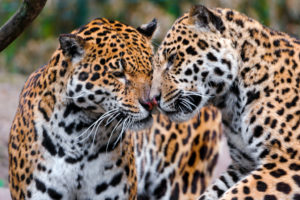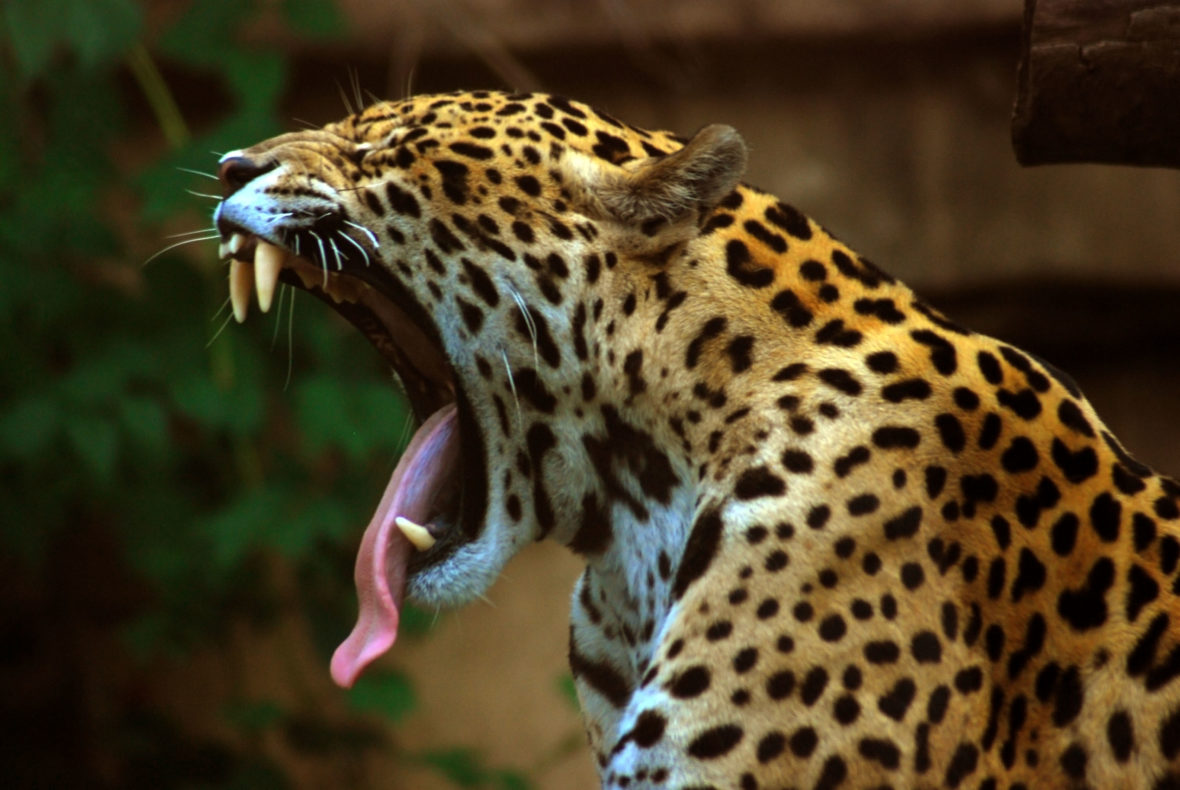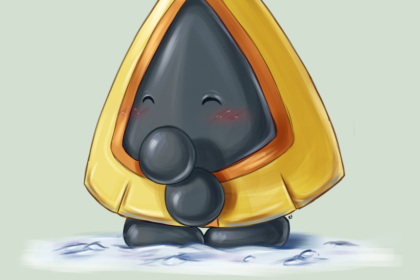Jaguars are big cats that primarily inhabit North, Central and South America. They’re easily identifiable by their yellow and orange coats, dark spots and short legs. Their spots are unique to each jaguar and each spot looks like a rose, which is why they’re called “rosettes.” Take a look below for 27 more fascinating and interesting facts about jaguars.
1. They’re the biggest cat in the Americas and the third largest cats in the world.
2. They can grow to between 4 and 6 feet, or 1 and 2 meters, in length. Their tails can be 2 feet, or 60 centimeters, in length, though their tails are short compared to other big cats.
3. Male jaguars are bigger than female jaguars. Male jaguars can weigh anywhere between 126 to 250 pounds, or 57 to 113 kilograms. Female jaguars can weigh anywhere between 100 to 200 pounds, or 45 to 90 kilograms.
4. They mostly inhabit forests or woods, though they can also be found in desert areas such as Arizona.
5. They like to stay close to water sources as they like to eat fish. They’re known to dip their tails into the water to lure fish, like a fisherman does with a fishing line.
6. Jaguars used to roam the southwestern United States from Texas to California. James “Grizzly” Adams even reported seeing a female and two cubs in California’s Tehachapi Mountains, near Bakersfield in the mid 1800s.

7. Anti predator efforts in the early 1900s wiped out many jaguars from the northern reaches of California.
8. Most jaguars in the Americas now live in the state of Sonora in Mexico.
9. The only known jaguar in the United States today is a young male called “El Jefe.” He’s been seen around the Santa Rita Mountains near Tucson, where he has been for the past 3 years.
10. Before El Jefe, the last known jaguar to have lived in the United States was another male jaguar called Macho B. However, he was killed in 2009 when an attempt to trap and radio collar him went wrong.
11. The last known female jaguar in the United States was shot in 1963 by a hunter who thought it was a bobcat.
12. The killing of Macho B was a huge scandal for Arizona’s Fish and Game Department which eventually led to criminal investigation for the killing of an endangered species.
13. Jaguars tend to stay by themselves, only spending time with others during mating season or when taking care of the cubs.
14. They’re known to mark their territory with urine or by marking trees with their claws. Their territories can sometimes be up to 50 miles wide.
15. The Aztec civilization took the image of the jaguar as the representative of a ruler and as a warrior. The Aztecs even formed an elite warrior class known as the Jaguar Knights. In Aztec mythology, the jaguar was considered to be the totem animal of the power deity Tezcatlipoca.

16. Jaguars are top level predators, which means that they don’t have any natural predators other than humans, who are known to hunt them for fur or for sport.
17. Their name comes from the Native American word “yajuar” which means “he who kills with one leap.” This likely comes from the fact that jaguars take advantage of their strong jaws and sharp teeth, often catching their prey by the head after leaping at them and chomping down to make the kill.
18. They’re carnivores, which means that they have a meat based diet. Their diet consists of deer, peccary, monkeys, birds, frogs, fish, alligators and small rodents.
19. Jaguars mate between August and September. The gestation period for the female is about 100 days and she will give birth to 1 to 4 cubs.
20. the cubs are born with their eyelids seal shut. After 2 weeks, they will be able to see for the first time. After 6 months, their mother will teach them to hunt. After 2 years, they will leave their mother and set out alone.
21. On average, jaguars live for 12 years.
22. According to the International Union for Conservation of Nature’s Red List of Threatened Species, the jaguar is “near threatened” due to poaching and the destruction of the rainforest.
23. The World Wildlife Federation estimates that there’s about 15,000 jaguars left in the wild.
24. Black jaguars occur due to a genetic mutation. the mutation causes the skin and fur to contain larger amounts of dark pigment. Most of these jaguars are found in rainforests because it’s easier for them to blend into the shadows of the trees when hunting.

25. Jaguars can see 6 times better than humans at night or during darker conditions due to a layer of tissue in the back of their eye that reflects light.
26. Unlike most cats, jaguars aren’t afraid of water. In fact, they’re very good swimmers.
27. In pre-Columbian Central and South America, the jaguar was a symbol of power and strength. Among the Andean cultures, a jaguar cult disseminated by the early Chavin culture became accepted over most of what’s modern Peru by 900 BC.





One Comment
Pingback:
January 1, 2018 at 6:05 pm